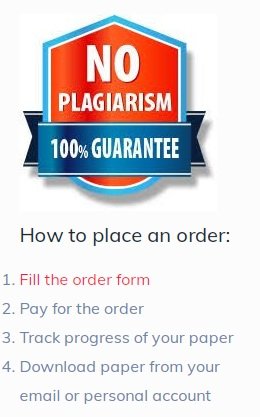| Order ID |
53563633773 |
| Type |
Essay |
| Writer Level |
Masters |
| Style |
APA |
| Sources/References |
4 |
| Perfect Number of Pages to Order |
5-10 Pages |
Description/Paper Instructions
Description
*Read the instructions carefully.
*Make sure to answer the questions required.
*Use only creditable sources like books and the provided articles to be use as sources.
*User APA citation, and cite everting carefully as this paper will summited trough Turnitin
—————————————————————————————————
Sibbet (1997) and Kiechel III (2012) provide historical context for management theory. After reading Cunliffe’s (2014) first chapter, skim read Fayol’s (1916/2020) second chapter, find and integrate at least two contemporary scholarly sources (within the past five years) that help you answer these questions:
What are the assumptions underlying about work and workers displayed in early management theories?
What complications arise when applying these concepts today when employees from different backgrounds must collaborate remotely from locations around the world?
Reminder
When crafting answers to these questions, please remember to integrate and cite the assigned materials. Consider bringing in additional support for your assertions. As you do, remember to both cite and reference them.
Be sure to make connections between the assigned materials and your ideas. Include a reference list at the end of your submission.
References
Bridgman, T., Cummings, S., & Ballard, J. (2019). Who built Maslow’s Pyramid? A history of the creation of management studies’ most famous symbol and Its implications for management education. Academy of Management Learning & Education, 18(1), 81-98. https://doi.org/10.5465/amle.2017.0351
Cunliffe, A. L. (2014). A very short, fairly interesting and reasonably cheap book about management (2nd ed.). SAGE.
Fayol, H. (2016). General and industrial management (Preview ed.) https://www.google.com/books/edition/General_and_Industrial_Management/WFp5DQAAQBAJ?hl=en&gbpv=1&dq=General+and+Industrial+Management&printsec=frontcover (Originally published 1916)
Follett, M. P. (2020). Follett Writings 1896-1949. The Mary Parker Follett Network. http://mpfollett.ning.com/mpf/follett-writings
Hatchuel, A., & Segrestin, B. (2019, Summer2019). A century old and still visionary: Fayol’s innovative theory of management. European Management Review, 16(2), 399-412. https://doi.org/10.1111/emre.12292
Kiechel III, W. (2012). The management century. Harvard Business Review, 90(11), 62-75.
Maslow, A. H. (1943). A theory of human motivation. Psychological Review, 50(4), 370-396. https://doi.org/10.1037/h0054346
Mintzberg, H. (2013). Simply managing. Berrett-Koehler.
Quinn, R. E., Faerman, S. R., Thompson, M. P., McGrath, M. R., & Bright, D. S. (2015). Becoming a master manager: A competing values approach (6th ed.). Wiley.
Sibbet, D. (1997). 75 years of management ideas and practice 1922-1997. Harvard Business Review, 75(5), 2-12.
|
RUBRIC
| QUALITY OF RESPONSE |
NO RESPONSE |
POOR / UNSATISFACTORY |
SATISFACTORY |
GOOD |
EXCELLENT |
| Content (worth a maximum of 50% of the total points) |
Zero points: Student failed to submit the final paper. |
20 points out of 50: The essay illustrates poor understanding of the relevant material by failing to address or incorrectly addressing the relevant content; failing to identify or inaccurately explaining/defining key concepts/ideas; ignoring or incorrectly explaining key points/claims and the reasoning behind them; and/or incorrectly or inappropriately using terminology; and elements of the response are lacking. |
30 points out of 50: The essay illustrates a rudimentary understanding of the relevant material by mentioning but not full explaining the relevant content; identifying some of the key concepts/ideas though failing to fully or accurately explain many of them; using terminology, though sometimes inaccurately or inappropriately; and/or incorporating some key claims/points but failing to explain the reasoning behind them or doing so inaccurately. Elements of the required response may also be lacking. |
40 points out of 50: The essay illustrates solid understanding of the relevant material by correctly addressing most of the relevant content; identifying and explaining most of the key concepts/ideas; using correct terminology; explaining the reasoning behind most of the key points/claims; and/or where necessary or useful, substantiating some points with accurate examples. The answer is complete. |
50 points: The essay illustrates exemplary understanding of the relevant material by thoroughly and correctly addressing the relevant content; identifying and explaining all of the key concepts/ideas; using correct terminology explaining the reasoning behind key points/claims and substantiating, as necessary/useful, points with several accurate and illuminating examples. No aspects of the required answer are missing. |
| Use of Sources (worth a maximum of 20% of the total points). |
Zero points: Student failed to include citations and/or references. Or the student failed to submit a final paper. |
5 out 20 points: Sources are seldom cited to support statements and/or format of citations are not recognizable as APA 6th Edition format. There are major errors in the formation of the references and citations. And/or there is a major reliance on highly questionable. The Student fails to provide an adequate synthesis of research collected for the paper. |
10 out 20 points: References to scholarly sources are occasionally given; many statements seem unsubstantiated. Frequent errors in APA 6th Edition format, leaving the reader confused about the source of the information. There are significant errors of the formation in the references and citations. And/or there is a significant use of highly questionable sources. |
15 out 20 points: Credible Scholarly sources are used effectively support claims and are, for the most part, clear and fairly represented. APA 6th Edition is used with only a few minor errors. There are minor errors in reference and/or citations. And/or there is some use of questionable sources. |
20 points: Credible scholarly sources are used to give compelling evidence to support claims and are clearly and fairly represented. APA 6th Edition format is used accurately and consistently. The student uses above the maximum required references in the development of the assignment. |
| Grammar (worth maximum of 20% of total points) |
Zero points: Student failed to submit the final paper. |
5 points out of 20: The paper does not communicate ideas/points clearly due to inappropriate use of terminology and vague language; thoughts and sentences are disjointed or incomprehensible; organization lacking; and/or numerous grammatical, spelling/punctuation errors |
10 points out 20: The paper is often unclear and difficult to follow due to some inappropriate terminology and/or vague language; ideas may be fragmented, wandering and/or repetitive; poor organization; and/or some grammatical, spelling, punctuation errors |
15 points out of 20: The paper is mostly clear as a result of appropriate use of terminology and minimal vagueness; no tangents and no repetition; fairly good organization; almost perfect grammar, spelling, punctuation, and word usage. |
20 points: The paper is clear, concise, and a pleasure to read as a result of appropriate and precise use of terminology; total coherence of thoughts and presentation and logical organization; and the essay is error free. |
| Structure of the Paper (worth 10% of total points) |
Zero points: Student failed to submit the final paper. |
3 points out of 10: Student needs to develop better formatting skills. The paper omits significant structural elements required for and APA 6th edition paper. Formatting of the paper has major flaws. The paper does not conform to APA 6th edition requirements whatsoever. |
5 points out of 10: Appearance of final paper demonstrates the student’s limited ability to format the paper. There are significant errors in formatting and/or the total omission of major components of an APA 6th edition paper. They can include the omission of the cover page, abstract, and page numbers. Additionally the page has major formatting issues with spacing or paragraph formation. Font size might not conform to size requirements. The student also significantly writes too large or too short of and paper |
7 points out of 10: Research paper presents an above-average use of formatting skills. The paper has slight errors within the paper. This can include small errors or omissions with the cover page, abstract, page number, and headers. There could be also slight formatting issues with the document spacing or the font Additionally the paper might slightly exceed or undershoot the specific number of required written pages for the assignment. |
10 points: Student provides a high-caliber, formatted paper. This includes an APA 6th edition cover page, abstract, page number, headers and is double spaced in 12’ Times Roman Font. Additionally, the paper conforms to the specific number of required written pages and neither goes over or under the specified length of the paper. |
|
|
 GET THIS PROJECT NOW BY CLICKING ON THIS LINK TO PLACE THE ORDER GET THIS PROJECT NOW BY CLICKING ON THIS LINK TO PLACE THE ORDER 
|
| Do You Have Any Other Essay/Assignment/Class Project/Homework Related to this? Click Here Now [CLICK ME] and Have It Done by Our PhD Qualified Writers!! |

|
 |



PLACE THE ORDER WITH US TODAY AND GET A PERFECT SCORE!!!


 GET THIS PROJECT NOW BY CLICKING ON THIS LINK TO PLACE THE ORDER
GET THIS PROJECT NOW BY CLICKING ON THIS LINK TO PLACE THE ORDER 

